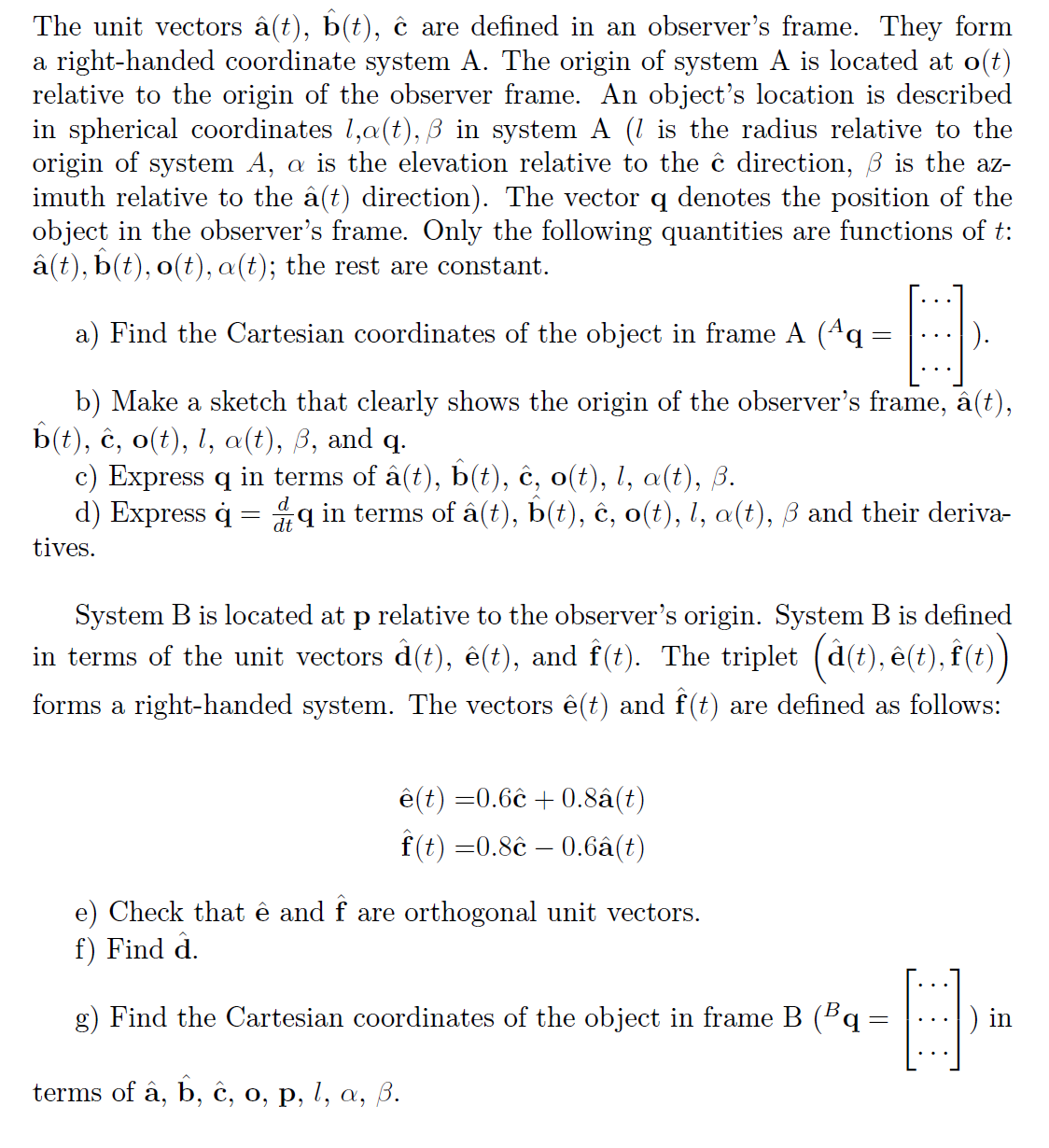Answered step by step
Verified Expert Solution
Question
1 Approved Answer
The unit vectors (t), (t), are defined in an observer's frame. They form a right-handed coordinate system A. The origin of system A is

The unit vectors (t), (t), are defined in an observer's frame. They form a right-handed coordinate system A. The origin of system A is located at o(t) relative to the origin of the observer frame. An object's location is described in spherical coordinates 1,a(t), in system A (1 is the radius relative to the origin of system A, a is the elevation relative to the direction, is the az- imuth relative to the (t) direction). The vector q denotes the position of the object in the observer's frame. Only the following quantities are functions of t: (t), (t), o(t), a(t); the rest are constant. a) Find the Cartesian coordinates of the object in frame A (^q= B b) Make a sketch that clearly shows the origin of the observer's frame, (t), (t), , o(t), l, a(t), , and q. c) Express q in terms of (t), (t), , o(t), l, a(t), . d) Express q = tives. - d dt q in terms of (t), b(t), , o(t), l, a(t), B and their deriva- System B is located at p relative to the observer's origin. System B is defined in terms of the unit vectors (t), (t), and f(t). The triplet (d(t), (t), f(t)) forms a right-handed system. The vectors (t) and f(t) are defined as follows: (t) =0.6 +0.8(t) f(t)=0.8 - 0.6(t) e) Check that and f are orthogonal unit vectors. f) Find d. g) Find the Cartesian coordinates of the object in frame B (q = terms of , b, c, o, p, l, a, . ) in
Step by Step Solution
There are 3 Steps involved in it
Step: 1

Get Instant Access to Expert-Tailored Solutions
See step-by-step solutions with expert insights and AI powered tools for academic success
Step: 2

Step: 3

Ace Your Homework with AI
Get the answers you need in no time with our AI-driven, step-by-step assistance
Get Started


